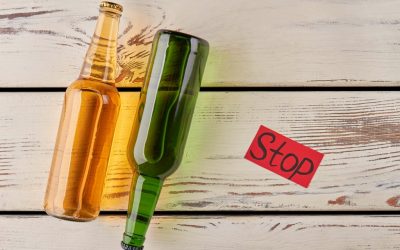Teenage girls are at particular risk for cyberbullying through use of social media; however, boys are not immune. In addition to the implemented techniques of face-to-face bullying, the spreading and posting of non-consensual explicit pictures is a form of cyberbullying that has gained popularity within recent years. One quarter of teens say they have been sent explicit images they didn’t ask for, while 7% say someone has shared explicit images of them without their consent.

The Neuroscience of Emotions: Clinical Relevance for Understanding Depression, Anxiety, and Addiction
While in the process of drinking, alcohol acts as a stimulant, but as drinking tapers off, it begins to act more as a sedative. At the same time, behavioral researchers sought to understand the physiological and psychological effects of drinking. Drinking profoundly alters mood, arousal, behavior, and neuropsychological functioning.
Social Interaction
This group also found no difference in the quinpirole-mediated inhibition of dopamine release between alcohol and control male cynomolgus macaques [24]. It is likely that species, striatal subregion, and intake duration (6 months in the previous study versus 1 year in the present study) differences may account for many of the dissimilarities between studies. http://dumso.ru/news/dumso-i-rodnik-gotovyatsya-k-festivalyu-blago-daryu.html It should also be noted that our study is the first to examine long-term alcohol effects on dopamine release in the putamen of NHPs and to demonstrate that acetylcholine driven dopamine release is conserved across rodent and NHP species. Studies elucidating the underlying mechanism of action of the complex dopamine–alcohol interaction have been conducted.
- Significant indirect effects indicate the functional connection significantly mediated the effect of beverage type on attentional bias.
- Schematic representation of alcohol’s effects on the balance of inhibitory and excitatory neurotransmission in the brain.
- We examined the behavioral evidence for overlapping mechanisms of alcohol and non-drug reward AB by conducting pairwise Spearman’s partial correlations among the three AB tasks, covarying for beverage effects.
- Dopaminergic neurons that relay information to the NAc shell are extremely sensitive to alcohol.
- One mutation is known as the “long” allele and the other mutation is known as the “short” allele.
- Dopamine alters the sensitivity of its target neurons to other neurotransmitters, particularly glutamate.
How You Might Feel With Low Dopamine Levels

In this context, the decreases in release in the putamen of the repeated abstinence male monkeys may limit behavioral plasticity to a greater extent in this region relative to the caudate. This could be one factor contributing to the development of invariant alcohol consumption following long-term drinking with repeated abstinence observed in a previous study of cynomolgous macaques [8]. In this context, the different dopaminergic changes in actively drinking versus repeated abstinence males are intriguing.
- Posttranslational modifications such as phosphorylation are core molecular signaling events.
- A recent PET study [118] demonstrated for the first time that, in addition to the ventral striatum, the long‐term consumption of alcohol leads to lowered dopamine levels also in prefrontal cortical structures.
- Social media use becomes problematic when someone views social networking sites as an important coping mechanism to relieve stress, loneliness, or depression.
- However, in rodent and macaque brain slices, an acute alcohol challenge following chronic alcohol exposure (inhalation or drinking) decreases dopamine release in the nucleus accumbens (NAc) in vivo and ex vivo preparations [24, 38].
- It should also be mentioned that these typical antipsychotic agents might have effects on other receptors including dopamine D1, 5HT2 and alpha1 receptors.
- For this study, the scientists removed the ovaries from one group of rats to simulate menopause and gave a second group of menopausal rats an estrogen replacement.
- In a retrospective study of 151 schizophrenic patients with alcohol dependence, 36 patients received the atypical antipsychotic medication clozapine.
Stimulants that inhibit the actions of adenosine include caffeine as well as theophylline, a chemical found in tea. Animal studies have shown that caffeine and theophylline reduce the sedative and motor-incoordinating effects of alcohol (Dunwiddie 1995), although these substances do not alleviate symptoms of intoxication in humans. Biochemical evidence indicates that short-term exposure to alcohol of nerve cell cultures in the laboratory increases the levels of adenosine that can interact with adenosine receptors. Thus, an alcohol-induced increase in adenosine levels might be responsible for part of alcohol’s sedative actions.
Dopamine as a Treatment Target for Alcoholism
It’s the chemical that drives us to seek food, sex and exercise and other activities that are crucial to our well-being and survival. Activities such as eating, hugging and exercising can generate dopamine production in the brain. The brain uses billions of neurotransmitters to manage everything from our breathing to our heartbeat to our digestion. http://tal-sky.ru/tags/Recovery/ Christy Osborne is a certified sobriety coach and founder of Love Life Sober, which helps empower women across the UK and US to get back in control of their relationship with alcohol. « Alcohol can interfere with our liver’s ability to metabolise hormones properly, leading to imbalances that exacerbate perimenopausal symptoms, » confirms Christy.
- Overuse of social networking sites is much more problematic in children and young adults because their brains and social skills are still developing.
- The main inhibitory neurotransmitter in the brain is gamma-aminobutyric acid (GABA).
- Indeed, Morrisett and Swartzwelder (1993) reported that short-term alcohol exposure decreased LTP in the hippocampus (Bliss and Collingridge 1993).
- Decreased levels of dopamine can occur in certain neurodegenerative diseases, such as Parkinson’s disease, wherein the nerve cells responsible for producing and releasing dopamine are dying, Dr. Giordano explains.
2. Atypical dopamine D2 receptor antagonists

It is a monoamine (a compound containing nitrogen formed from ammonia by replacement of one or more of the hydrogen atoms by hydrocarbon radicals). Dopamine is a precursor (forerunner) of adrenaline and a closely related molecule, noradrenalin. Krystal J et al., The vulnerability to alcohol and substance abuse in individuals diagnosed with schizophrenia. This could https://livewirerecordings.net/2024/01/29/negative-impact-of-excessive-entertainment-on-society/ include something as simple as noticing flowers in the garden, listening to your favorite song, smelling coffee beans, or blowing bubbles. This will kick up dopamine production, Peterson explains, and you’ll get a mental health boost that lasts. Schematic representation of alcohol’s effects on the balance of inhibitory and excitatory neurotransmission in the brain.
- Disulfiram administration helps patients learn non-drinking behaviours and the ability to exercise self-control.
- The following text introduces some of the neural circuits relevant to AD, categorized by neurotransmitter systems.
- One study from the University of Pittsburgh found a correlation between time spent scrolling through social media apps and negative body image feedback.
- Complex brain functions such as memory, consciousness, alertness, and learning are controlled by multiple neurotransmitter and neuromodulatory systems acting in concert.
Substance Use Disorder and Addiction
Consequently, through the activation of dopaminergic neurons, motivational stimuli can influence the activity of various parts of the brain that might serve different behavioral functions. This mechanism may be one reason underlying the wide range of dopamine’s roles in behavior. A large body of evidence indicates that dopamine plays an important role in motivation and reinforcement6 (Wise 1982; Robbins et al. 1989; Di Chiara 1995). These factors include (1) the type of stimuli that activate dopaminergic neurons, (2) the specific brain area(s) affected by dopamine, and (3) the mode of dopaminergic neurotransmission (i.e., whether phasic-synaptic or tonic-nonsynaptic). This rather specific distribution pattern of dopaminergic neurons contrasts with other related neurotransmitter systems (e.g., serotonin or noradrenaline), which affect most regions of the forebrain.
